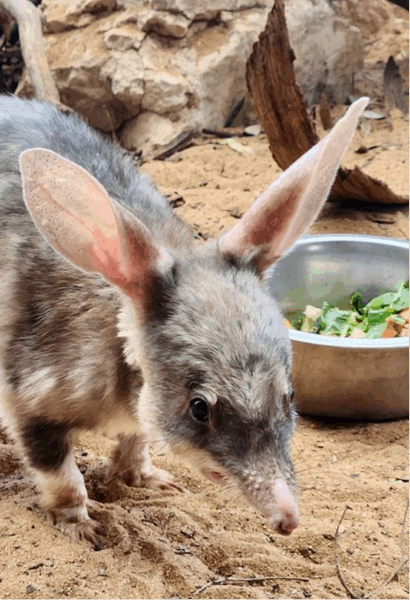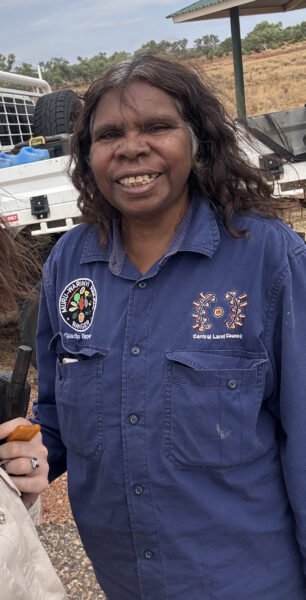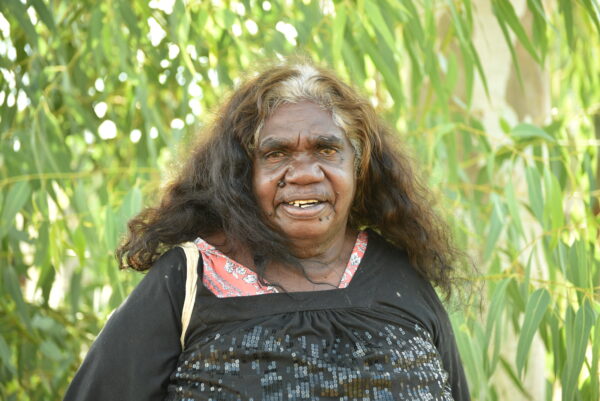A Land Rights News article

When Tennant Creek locals rescued a bilby from its dead mother’s pouch in late 2021 it was the beginning of an amazing genetic journey.
After being told about a baby bilby whose mother had been killed on a road near Bootu Creek Mine Muru-Warinyi Ankkul ranger, Gladys Brown, travelled with family to rescue the hairless tiny creature.
Ms Brown, her niece Dianne Stokes and Ms Stokes’ daughter Amber drove two hours to retrieve the bilby from Ms Stokes’ son, Sebastian Waistcoat, who worked at the mine.
“It was a real family event. We all hadn’t seen a bilby before, we wanted to go and see what it looked like. First time looking at a small bilby. It’s a bit different to baby kangaroos. It had sharp nails,” she said.
“It was moving around probably missing its mother. I was cuddling it and making sure it was alright.”
Ms Brown named the joey Lukkanu, meaning star in Warlmanpa.
“I felt sorry for him losing his mother so I took him to the vet,” Ms Brown said.

After caring for him they gave Lukkanu to Tennant Creek wildlife carer Carol Hepburn who sought advice from the Alice Springs Desert Park and Sea World. She mothered, fed and provided him with round-the-clock care for a couple of months.
“I care for pretty much anything that’s not venomous, like wallabies, kangaroos and other smaller animals, ’’ Ms Hepburn said.
Once Lukkanu grew fur and became strong he was relocated to the Alice Springs Desert Park where his breeding journey began. Thanks to Ms Hepburn’s care during Lukkanu’s most vulnerable stages, he went on to greater bilby things.
As a wild-born animal he provided valuable genetic diversity for the Desert Park’s bilby breeding program and fathered two female and four male joeys.
Lukkanu’s male joeys Kulbar, Mr NT and Tyson were transferred to other captive breeding programs across the country. Kulbar was moved to Kanyana Wildlife in Western Australia, Mr NT to Charleville Wildlife Sanctuary in Queensland and Tyson stayed temporarily at Monarto Safari Park in South Australia and bred joeys Clive and Trish before moving to Currumbin in Queensland.
Early this year Ms Brown wanted to visit Lukkanu and found he had moved to Monarto Safari Park which hosts the Zoo and Aquarium Association’s national Bilby Species Management Program.
Lukkanu had been renamed TC but after Ms Brown let the park’s Bilby Metapopulation Coordinator, Claire Ford, know his Warlmanpa name they changed it back to Lukkanu.

In July Lukkanu met Gigi and they bred a new joey.
Now at the age of four (31 in bilby years) and weighing two kilos Lukkanu provides rare and valuable genetics to the intensive breeding program.
Genetic diversity is important to grow bilby numbers, prevent inbreeding and for overall healthier bilbies.
Introducing wild bilbies to breeding programs also helps bilbies to thrive out bush for generations to come. When bilbies are released back into the bush this genetic boost makes sure they have the best possible chance of survival.
“We can’t thank you enough… Lukkanu is making such a wonderful contribution to the bilby breeding program,” Ms Ford said.
